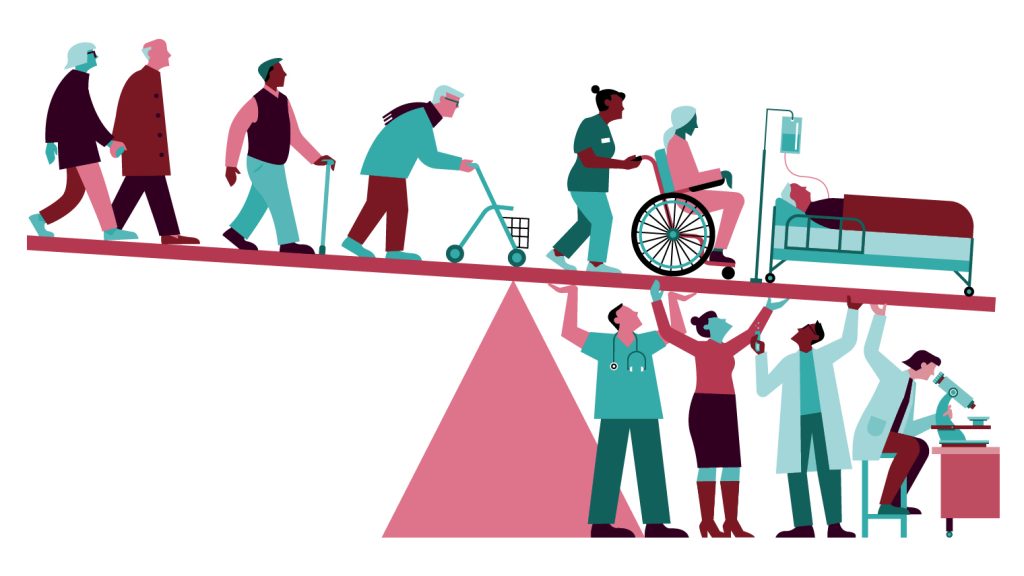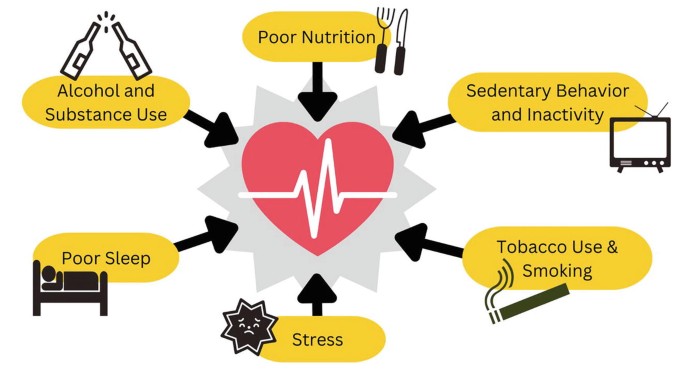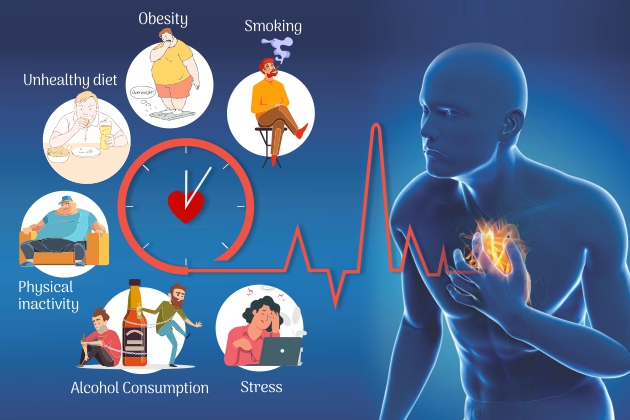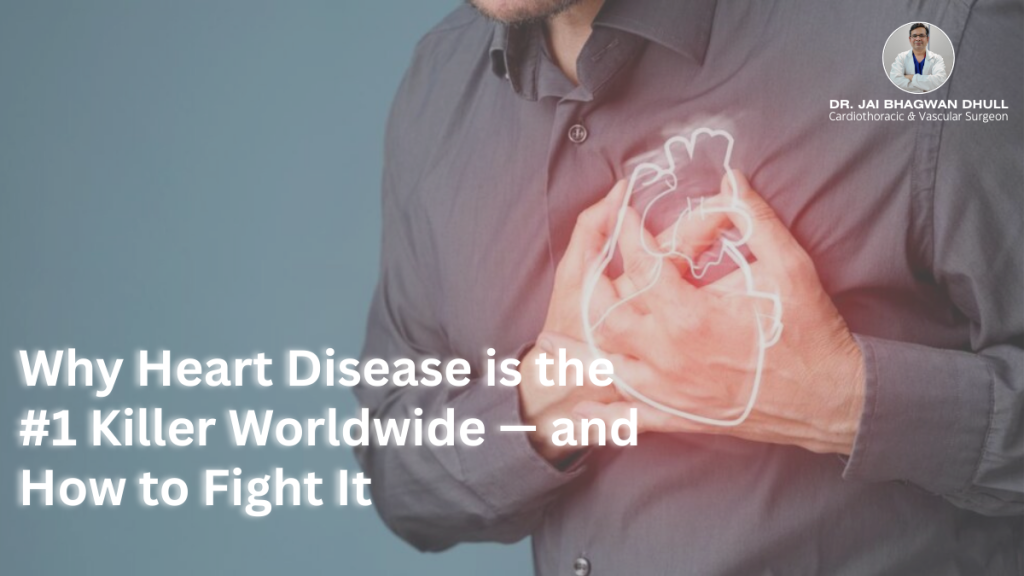Heart disease, also known as cardiovascular disease, is the leading cause of death across the globe. Every year, millions of people lose their lives to heart attacks, strokes, and other complications of cardiovascular illness. Despite advances in medicine and technology, heart disease remains the number one killer worldwide. Understanding why it holds this position — and how we can fight it — is vital for saving lives and building healthier communities.
Why Heart Disease Dominates Global Mortality
1. The Burden of Aging Populations
As global life expectancy has increased, more people are living into older age — a time when the risk of cardiovascular disease rises sharply. Age brings natural wear on blood vessels and higher chances of conditions such as hypertension and high cholesterol, both of which are precursors to heart disease.

2. Lifestyle Risk Factors
Modern living has introduced behaviors that fuel the spread of heart disease:
- Diets high in processed foods, sugar, and unhealthy fats.
- Sedentary lifestyles with limited physical activity.
- Widespread use of tobacco and excessive alcohol consumption.
- Rising rates of obesity and type 2 diabetes.
Each of these factors raises cardiovascular risk, and when combined, they create a deadly mix that explains the massive global toll.

3. Environmental and Social Conditions
Polluted air, chronic stress, and lack of access to healthy foods contribute to heart health challenges, especially in urban environments. In many low- and middle-income countries, environmental hazards and social inequalities make people more vulnerable to heart disease.

4. Gaps in Healthcare Access
In many regions, health systems are not equipped to provide early detection, preventive care, or affordable treatment. People often seek medical help only when heart disease has reached an advanced stage. By then, options are limited and outcomes are worse.
The Global Picture in Numbers
Heart disease causes more deaths each year than cancer, diabetes, respiratory illnesses, and infectious diseases combined. Coronary artery disease alone is responsible for nearly half of all cardiovascular deaths. Stroke is the second leading contributor. Together, these conditions account for nearly one-third of all global deaths annually.
What’s particularly concerning is that the burden falls disproportionately on low- and middle-income countries, where three out of every four cardiovascular deaths occur. This imbalance highlights the urgent need for awareness, prevention, and improved access to care.
Fighting Heart Disease: The Role of Specialists
While prevention is key, advanced medical care remains essential for those already affected by heart disease. This is where specialists play a critical role. For example, Dr. Jai Bhagwan Dhull, a renowned cardiothoracic and vascular surgeon in Hisar, Haryana, provides life-saving treatments for patients suffering from severe heart and vascular conditions.
Dr. Dhull’s expertise includes complex surgeries such as bypass operations, valve replacements, and pediatric heart procedures. Beyond surgical interventions, he also emphasizes preventive care — encouraging patients to adopt heart-healthy lifestyles, manage conditions like hypertension and diabetes, and attend regular check-ups. His work demonstrates how expert medical care, combined with education and awareness, can significantly reduce the toll of cardiovascular disease.

How Individuals Can Take Charge of Their Heart Health
While medical professionals like Dr. Jai Bhagwan Dhull provide advanced treatment, much of the battle against heart disease begins at the individual level. Here are steps everyone can take:
- Adopt a Heart-Healthy Diet
Choose fresh fruits, vegetables, whole grains, lean proteins, and healthy fats. Reduce intake of processed foods, sugar, and excess salt. - Stay Physically Active
Aim for at least 30 minutes of moderate exercise five days a week. Even walking, cycling, or gardening can improve cardiovascular health. - Quit Smoking and Limit Alcohol
Smoking damages blood vessels and raises blood pressure, while excessive alcohol increases heart disease risk. Stopping smoking is one of the most effective ways to protect your heart. - Manage Stress
Chronic stress elevates blood pressure and contributes to unhealthy behaviors. Practices such as meditation, yoga, or simple breathing exercises can make a difference. - Regular Health Screenings
Monitoring blood pressure, cholesterol, and blood sugar levels can help detect problems early, when they are easier to manage.
Community and Policy Solutions
The fight against heart disease goes beyond individuals. Governments, healthcare systems, and communities also have a role to play.
- Public Awareness Campaigns: Education about heart disease risks helps people make informed choices.
- Screening Programs: Regular, accessible health checks can detect risk factors early.
- Tobacco and Alcohol Control: Policies that limit availability and raise awareness about harms can reduce consumption.
- Urban Planning: Designing cities with parks, cycling tracks, and safe spaces for exercise encourages physical activity.
- Affordable Healthcare Access: Strengthening health systems and ensuring access to specialists is vital, especially in underserved regions.
Challenges in Reducing Heart Disease
Despite progress, significant challenges remain:
- Late Diagnosis: Many people seek care only after symptoms become severe.
- High Treatment Costs: Advanced surgeries and medicines can be expensive and out of reach for many families.
- Shortage of Specialists: Experts like Dr. Jai Bhagwan Dhull are invaluable, but the number of highly trained heart surgeons is limited, particularly in rural areas.
- Lifestyle Barriers: Changing long-term habits related to food, exercise, and smoking is difficult without social and community support.

A Way Forward
Beating the global heart disease epidemic requires a combined approach:
- Prevention through healthier lifestyles.
- Public health initiatives that encourage awareness and provide early screenings.
- Expert medical care for advanced cases.
Surgeons like Dr. Jai Bhagwan Dhull illustrate the impact that dedicated professionals can have. By providing advanced surgical care, leading community health initiatives, and emphasizing prevention, he and others like him show that progress is possible.
Conclusion
Heart disease is the world’s number one killer because it arises from a complex mix of aging, lifestyle choices, environmental challenges, and healthcare gaps. Yet, it is also one of the most preventable and treatable conditions. By adopting healthier habits, improving healthcare systems, and supporting the work of experts such as Dr. Jai Bhagwan Dhull, societies can dramatically reduce the devastating impact of cardiovascular disease.
The battle against heart disease is not only a medical challenge but a societal one. With coordinated effort, awareness, and accessible treatment, millions of lives can be saved each year.
